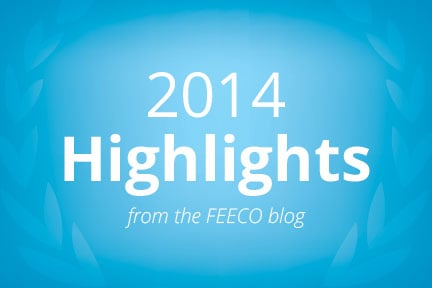At FEECO, we use our blog to keep our readers up to date on what’s happening in their industries, and educate them on the questions they ask most. We strive to bring our readers what matters most to them: information they can use.
This year we set out to help our readers with some of their most commonly asked questions.
In order to do this, we developed an ongoing material processing series, each aimed at a different material and all of its surrounding issues. We started our series by highlighting the following commonly processed materials: potash, gypsum, and limestone.
Here are some of this year’s highlights…
The Potash Processing Series
Highlight: Potash Processing: Pelletizing Vs. Compaction Granulation
While most potash is produced via the compaction granulation method, the pelletization method is gaining in popularity as producers look to create a premium potash product in an effort to feed a growing population on less aerable land. This article focuses on the differences between the two processes, and the advantages and disadvantages they each have to offer.
Other articles from this series:
Challenges in Potash Processing
The Potash Drying Process: What You Need to Know
The Potash Compaction Process: How it Works and Keys to Success
The Gypsum Processing Series
Highlight: The Basics of Drying Gypsum
Drying plays an important role in multiple steps during gypsum processing. It’s used to dry gypsum ores that have too high of a moisture content prior to further processing, and can even be used as a part of the beneficiation process. Furthermore, drying is critical to creating a premium product through pelletizing.
The Basics of Drying Gypsum gives readers an overview on how gypsum drying works, why it’s important, and material characteristics that can effect drying.
Other articles from this series:
Using A Pin Mixer to Process Gypsum
Challenges in Gypsum Processing
Processing Gypsum for Use in Soil Amendments
The Limestone Processing Series
Highlight: Benefits of Pelletizing Limestone
Limestone is used as a soil amendment in order to neutralize acidic soils. But despite a growing industry, many producers are still wondering if it’s worth it to pelletize limestone into a premium product. The Benefits of Pelletizing Limestone article takes a look at the many types of limestone products on the market, and why pelletized lime outperforms all of them.
Other articles in this series:
Maintaining Your Limestone Processing Operation
The Benefits of Adding a Pin Mixer to a Limestone Disc Pelletizing Operation
Limestone Pelletizing
In addition to our material processing series, we also featured a number of other top-of-mind topics from each of our equipment lines, including:
Agglomeration
The Importance of Material Knowledge
Anatomy of a Pelletizer
Agglomeration Drum vs Granulation Drum: What’s the Difference?
Thermal Processing
Top Applications for Rotary Kilns
What Makes an Industry Leading Rotary Dryer Manufacturer?
Fertilizer Systems
From Raw Manure to Dry Granules
Mitigating the Cost of Manure Through Organics Granulation
Material Handling
Bucket Elevator Basics
Everything you need to know about Bucket Elevator Design
While potash, gypsum and limestone were the heart of 2014’s posts, additional materials and topics will be ready to read each and every week. Do you have any suggestions? Send us a note on what you’d like to read in 2015, and we’ll incorporate it into the blog. Until then, thank you for the continued support and best wishes for a healthy and happy New Year.


